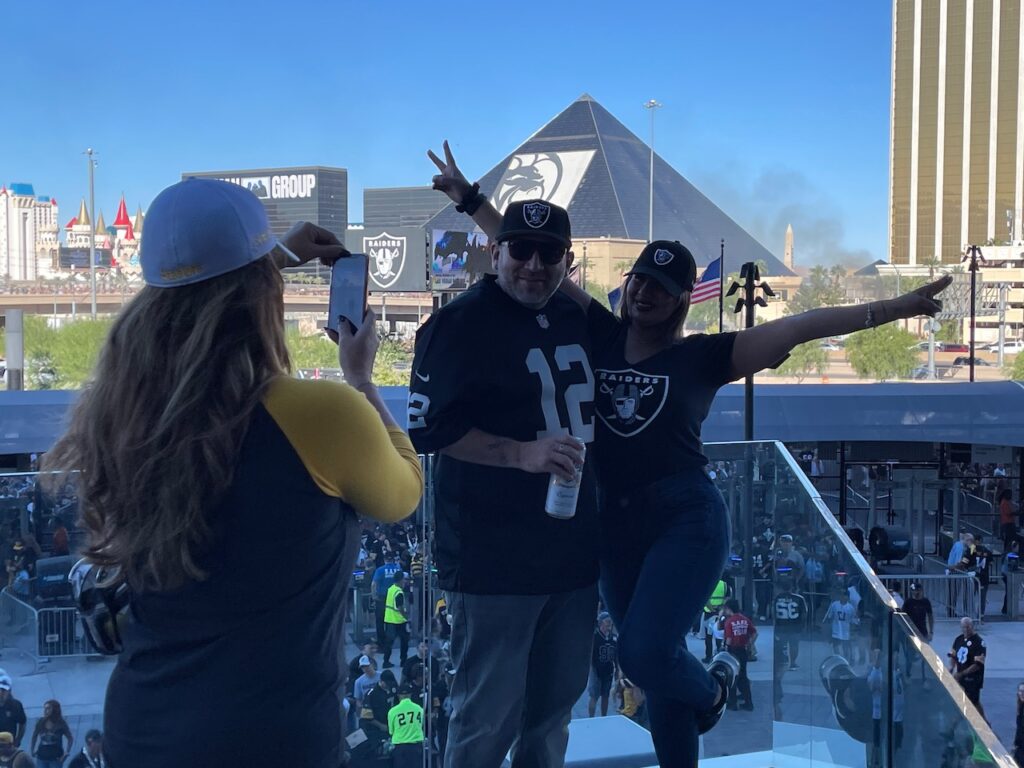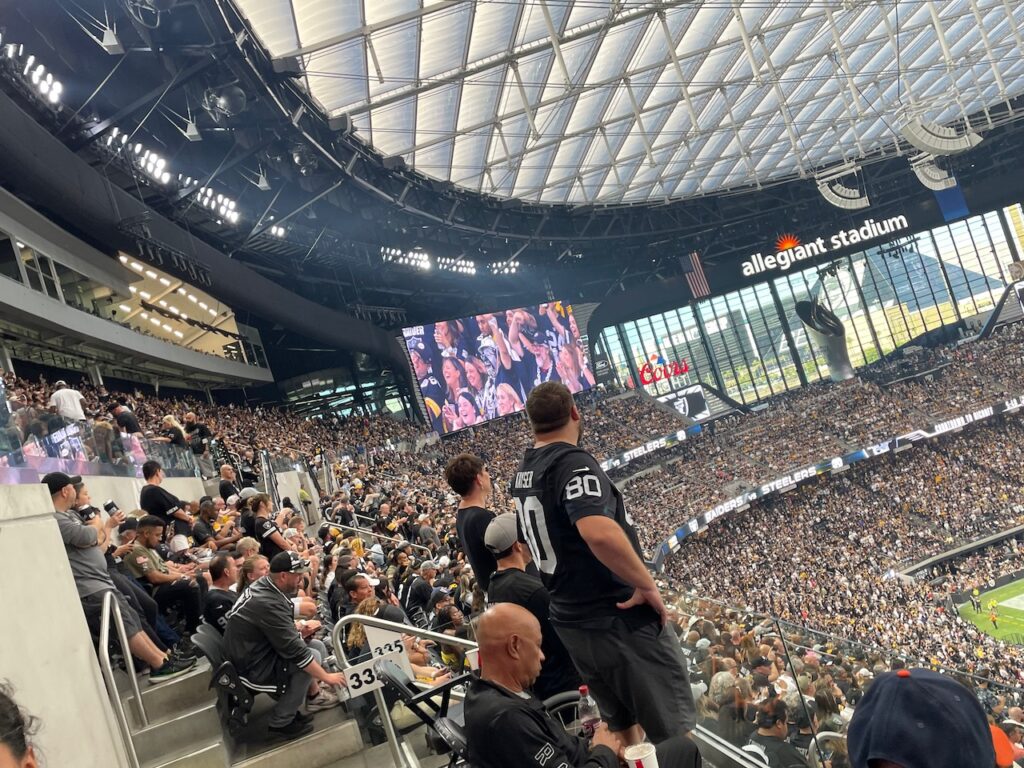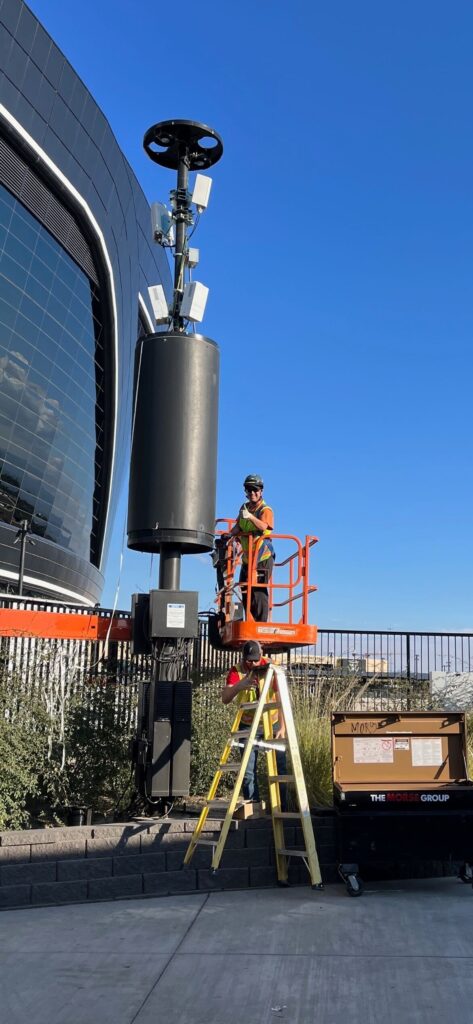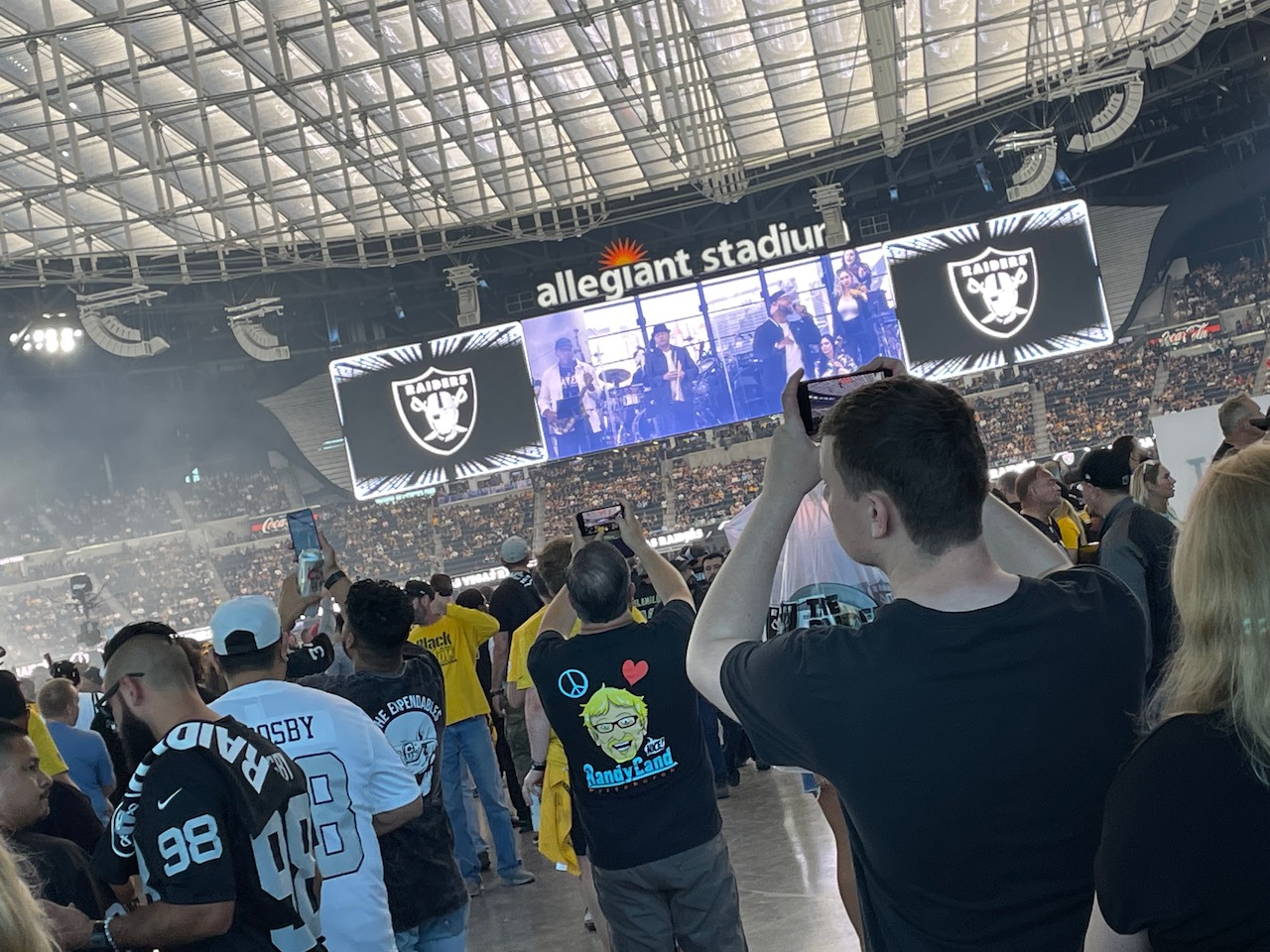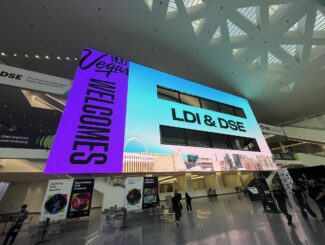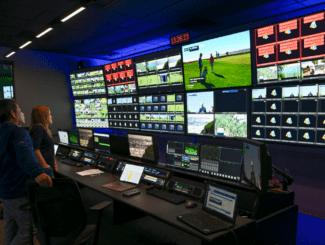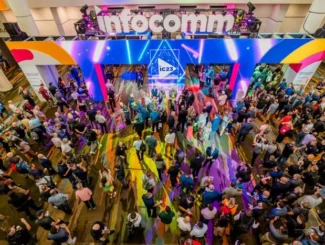To ensure that Allegiant Stadium’s robust fan-facing cellular networks are able to handle the additional demands of Super Bowl LVIII, the Las Vegas Raiders have expanded coverage both inside and outside the stadium, adding more coverage zones and support for new wireless spectrum in the process.
“Network needs in big venues evolve quickly,” Pasco said. “Allegiant Stadium is home to some of sport and entertainment’s biggest games and events. We’ll be ready.”
According to the Raiders, the stadium’s cellular network design and deployment partner DAS Group Professionals (DGP) used more equipment from original network vendors JMA Wireless and MatSing to bolster the existing neutral-host distributed antenna system (DAS) while also adding coverage for the 5G C-band spectrum for Verizon.
In addition to participating in the neutral-host DAS, all three top U.S. wireless carriers — Verizon, AT&T and T-Mobile — will also each have millimeter-wave deployments throughout the venue, including some new low-power millimeter-wave antennas inside the stadium suites. All the upgrades should be in place by the end of the calendar year, well ahead of Feb. 11, 2024, when the NFL’s championship game comes to Las Vegas.
“This is not a network re-do, it’s just more support for what we had already put in,” said Matt Pasco, vice president of information technology for the Las Vegas Raiders. Though the building itself has only been open since 2020, Pasco said the original networks were planned with such expansion in mind.
“Network needs in big venues evolve quickly,” Pasco said. “Allegiant Stadium is home to some of sport and entertainment’s biggest games and events. We’ll be ready.”
Adding more zones and C-band
For the original cellular deployment inside Allegiant Stadium, DGP used JMA Wireless neutral host DAS equipment for the network back end, as well as JMA antennas for coverage in the concourses, suites and other internal areas. For the main seating bowl, DGP used 30 lens antennas from MatSing, which point down from the roof structures.
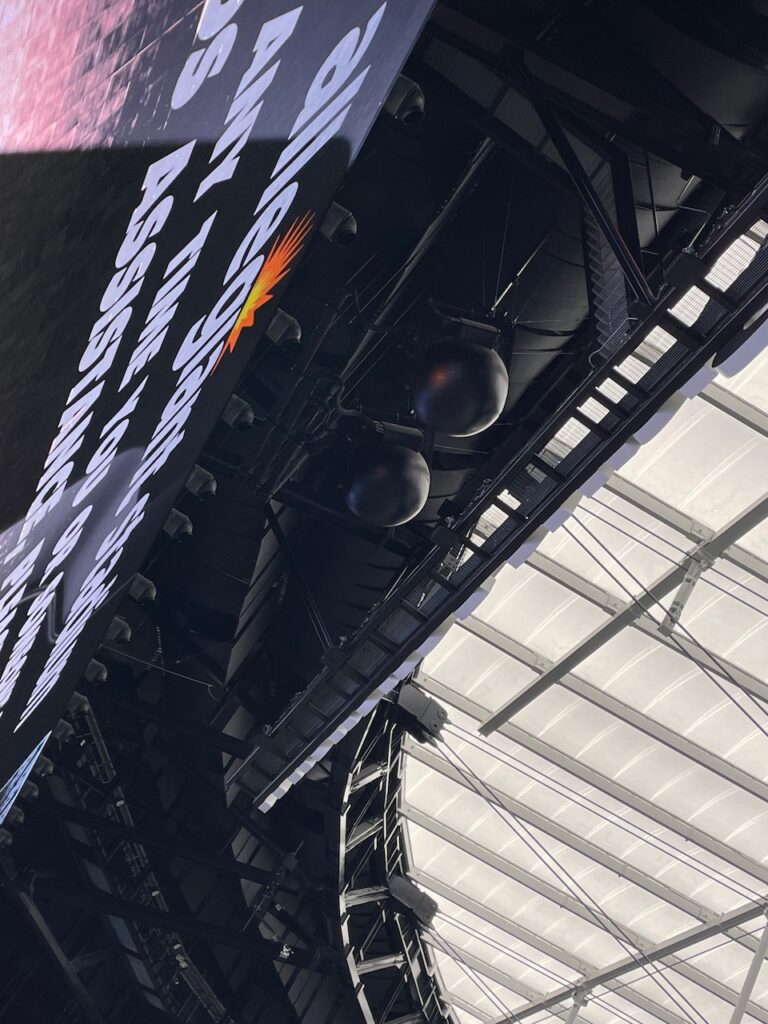
For the recent enhancements, DGP added 16 new MatSing antennas inside the venue for C-band coverage for a total of 46 MatSing antennas now covering the main seating bowl. According to DGP there was a total of four new DAS coverage zones added to the internal stadium network, along with four new zones specifically for field-area coverage. After the enhancements the internal stadium DAS will have 130 zones.
The Raiders and DGP also added more cellular coverage to the outside of the stadium, to better support any activations or other fan needs before they come into the building. The new deployments included some “stealth” antenna placements hidden behind the ribbon panels on the exterior walls, along with some new pole-mounted antenna placements. Among the outdoor antenna mix is another 16 MatSing lens antennas, bringing the total of MatSing antennas in use to 62 across the entire venue space.
Ready for the biggest data days
Part of the enhancements included bringing in support for C-band spectrum, which is being used by Verizon for 5G coverage. By adding new JMA C-Band remote units (247 for the internal network and 29 for the external network) the stadium now has 129 network zones with C-band coverage. No new antennas were needed for the back of the house network, just new C-band remotes.
“The JMA system we have in place is great, we just have to add on new software and hardware to add new frequencies as they come online,” said Pasco.
Historically, the Super Bowl has set new wireless data-consumption records almost every year since stadiums started deploying fan-facing networks. As part of that tradition, the top wireless carriers generally plan overall regional macro network upgrades in sync with the game, sometimes including mobile, temporary antenna deployments around the stadium and other fan-facing areas.
But inside the sleek black walls of the Raiders’ iconic new home, the network responsibilities fall to Pasco and the team’s IT department. In addition to some upgrades to the stadium’s Wi-Fi network (which will be discussed in a separate story) Allegiant Stadium now has its own cellular network with 46 MatSing lens antennas inside the stadium and another 16 outside; 452 JMA antennas, supported by 200 JMA remote radio locations; and multiple millimeter-wave antennas, to satisfy all the social media and communication needs of the bucket-event crowds.
